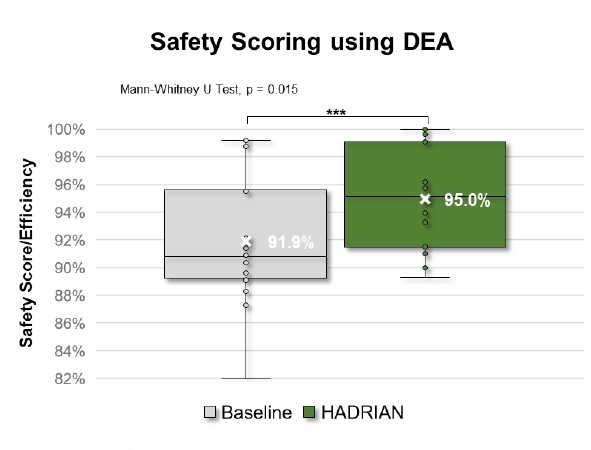
The current paper was inspired by the HADRIAN project and focuses on exploring the effects of innovative Human-Machine Interface (HMI) prototypes on safety, driving performance, and driver perceptions. Employing driving simulator experiments and questionnaires, this study investigates whether HADRIAN innovative HMI enhances safety and receives positive evaluations from drivers. Specifically, the investigation centers on a driving simulator experiment evaluating novel HMI prototypes designed to improve Automated Driving (AD) at SAE Levels 2 or 3. To facilitate HMI assessment, a tailored safety and impact assessment methodology was developed using unique Key Performance Indicators (KPIs). To benchmark and generate a total score on HADRIAN innovative HMI, a Data Envelopment Analysis (DEA) was deployed based on the aforementioned KPIs. The findings shed light on the influence of HADRIAN HMI innovations on safety and perceived impact when compared to a baseline “state-of-the-art” HMI. Subsequently, a comprehensive discussion is unfolded, highlighting the most significant KPIs that contributed to safety and perceived impact scores. This method and its outcomes can serve as a valuable resource for other HMI stakeholders, enabling them to employ similar human-centered assessment methodologies to assess the safety and perceived impact of potential HMI configurations.
| ID | pc532 |
| Presentation | |
| Tags |







